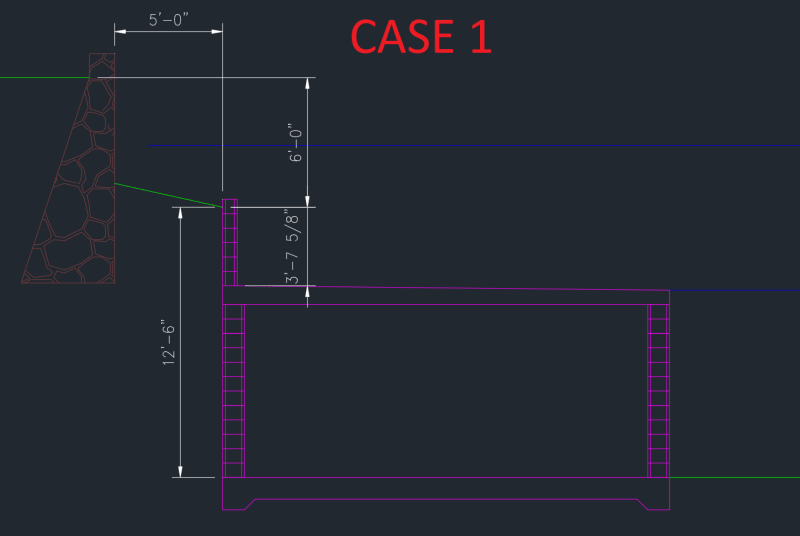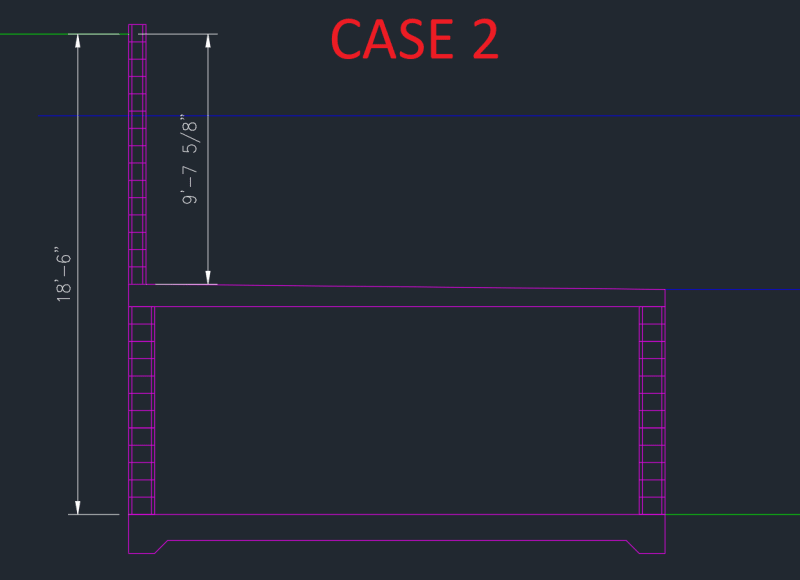In regards to the design of the basement wall (shown in Magenta) and the cantilever wall above it, would the presence of the gravity retaining wall on the backside have additional negative effects or induce additional lateral earth pressures on the basement wall (Shown in Case 1) vs. as if the gravity retaining wall were not even there at all (Case 2)? In essence, which is the more critical scenario in designing the basement wall?




